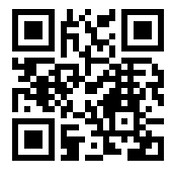
R u ok?
Take a Selfie.
And check for physiological signs of stress.
Scan your face with Helfie’s Stress AI to measure key physiological indicators - heart rate variability, blood oxygen, and respiratory rate - and assess your stress levels.
These vital markers offer valuable insights into your overall well-being.

About Helfie Wellness AI Helfie AI is a technology that uses computer vision algorithms to analyse various physiological markers on a person's face, including blood oxygen levels, respiratory rate, and stress levels. The technology is based on the fact that changes in these vital signs are often reflected in the appearance of a person's face. For example, blood oxygen levels can be estimated by analysing the colour of a person's skin. When blood oxygen levels are low, the skin can appear bluish or purple, while high blood oxygen levels can cause the skin to appear reddish. Helfie AI can analyse these colour changes in the skin to estimate the person's blood oxygen levels. Respiratory rate can also be estimated by analysing a person's facial movements. As a person breathes, their facial muscles move in a characteristic pattern. By tracking these movements, Helfie AI can estimate the person's respiratory rate. Stress levels can be estimated by analysing the appearance of a person's face, including factors such as skin colour, facial expressions, and muscle tension. Stress can cause changes in these factors, which Helfie AI can detect and use to estimate the person's stress levels. Overall, Helfie AI uses sophisticated computer vision algorithms to analyse various physiological markers on a person's face, providing a quick and convenient wellness check. While Helfie AI can be a useful tool for generating these readings, it is important to note that these readings should not be used as a substitute for professional medical advice or treatment.
Why Check? Checking for wellness using a technology like Helfie AI can be valuable for a number of reasons. First, it can provide a quick and convenient way to monitor your health. By simply scanning your face, Helfie AI can provide readings for blood oxygen levels, respiratory rate, and stress levels, which can give you a general indication of your current health status. This can be particularly useful for people who may not have easy access to medical facilities or who want to monitor their health on a regular basis. Second, checking for wellness can help identify potential health issues early on. By regularly monitoring your vital signs using a technology like Helfie AI, you may be able to detect changes in your health that could indicate the onset of a medical condition. Early detection can be crucial in treating many health conditions, and can potentially save lives. Finally, checking for wellness can help you track the effectiveness of your wellness practices. By monitoring your vital signs over time, you can see how changes in your lifestyle, such as diet and exercise, affect your health. This can help you make informed decisions about your wellness practices and make adjustments as needed. Overall, checking for wellness using a technology like Helfie AI can be a valuable tool for maintaining your health and wellbeing. However, it's important to note that these readings should be used as a complement to, not a substitute for, professional medical advice and treatment.
ACCURACY Accuracy: 83% Specificity: 71% What does this mean? An accuracy rate of 83% and a specificity rate of 71% mean that the AI algorithm has a moderate level of performance in measuring stress levels by scanning your face. The accuracy rate of 83% indicates that the AI algorithm correctly identified stress levels 83% of the time. This means that in 17% of cases, the algorithm may have incorrectly identified the stress level. While an 83% accuracy rate may seem high, it is important to note that it still leaves room for potential errors. The specificity rate of 71% means that the AI algorithm correctly identified non-stressful situations (true negatives) 71% of the time. This means that in 29% of cases, the algorithm may have identified a non-stressful situation as stressful (false positives). Overall, an accuracy rate of 83% and a specificity rate of 71% indicate that the AI algorithm has some level of effectiveness in measuring stress levels through facial scanning. Research and testing is ongoing to improvethe accuracy and reduce the potential for false positives for this algorithm.
Interact with
AI Specialist.
Dig deeper on any wellness topic, including potential causes of stress, just by chatting with Helfie AI.

-
Enjoy complimentary access to Helfie AI, including all health checks








.png)